La Planche des Belles Filles: Taking on the Tour’s brutal summit finish
Stage six of the Tour de France features the brutal final climb of La Planche des Belles Filles, which this July adds a final kilometre of suffering on gravel - Photos by Daniel Gould

In July 12, 2012 the wiry frame of a cyclist emerged at the top of an impossibly steep incline, powered an ungainly path to the finishing line, and threw his hands in the air in victory. The cyclist’s name was Chris Froome, the summit was La Planche des Belles Filles, and both had just staked a claim to Grand Tour fame.
Froome is recovering from his terrible crash this month — a fifth Tour win on hold till 2020 — but back in 2012 he was playing the role of super domestique while supporting Sir Bradley Wiggins to Britain’s maiden Tour victory. The stage win was Froome’s first, a breakthrough ride from one of the finest climbers the sport has ever seen.
>>> Tour de France 2019: route analysis
La Planche, making its debut, hasn’t been quite as prolific as the spindly Brit since then, but the drama that played out on these slopes — most notably on that final section of brutally precipitous tarmac — was enough to convince organisers of its worth, and both the 2014 and 2017 editions of the Tour featured ascents of the mountain.
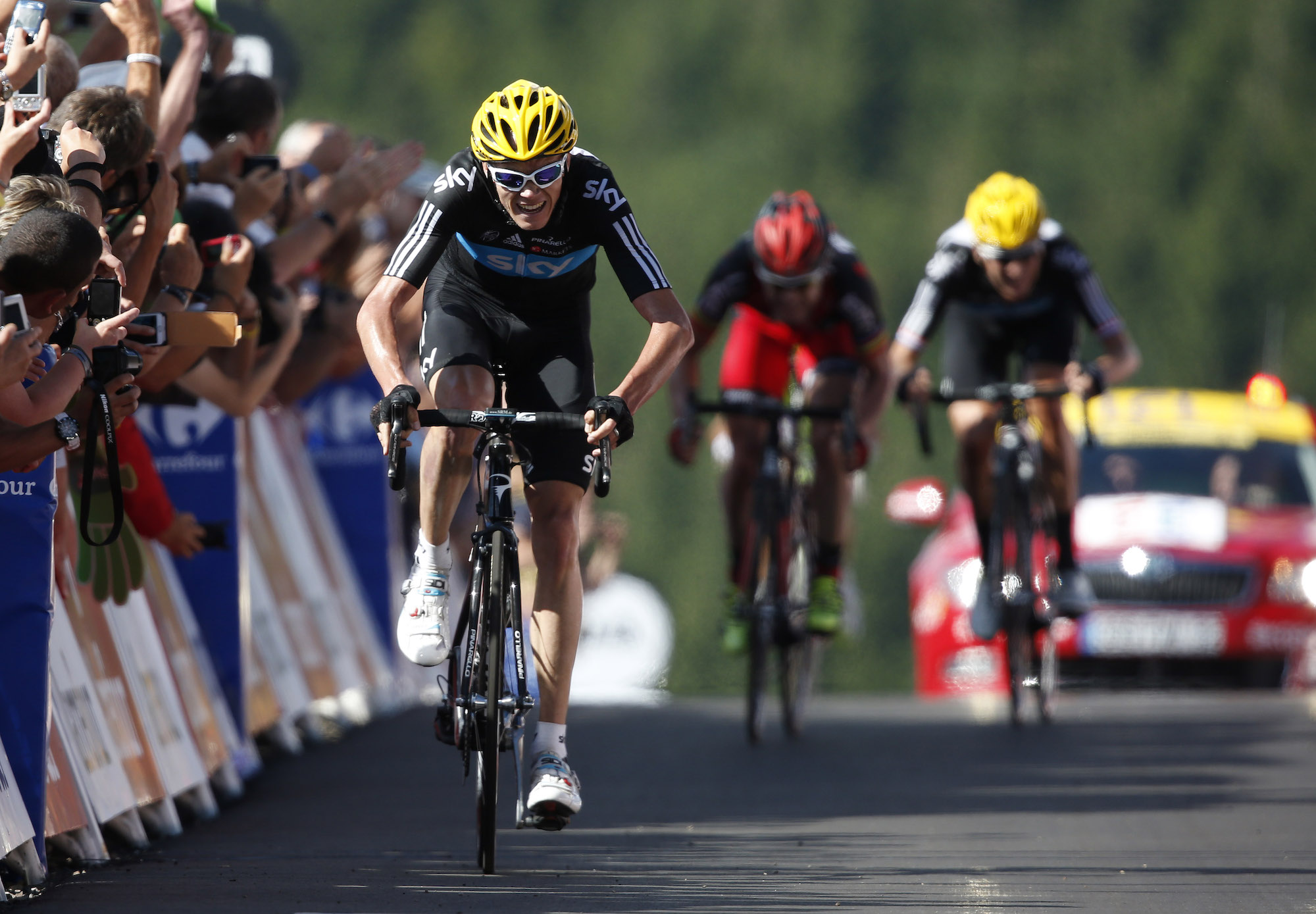
This year, then, will be La Planche’s fourth appearance in eight years, a ratio that puts it on a par with some of the Alpine and Pyrenean big hitters which, over the decades, have become a part of the Tour de France furniture.
So what’s the attraction with this little mountain in the Vosges? Why does it have such a large Tour footprint in such a short space of time? At just shy of six kilometres, it’s hardly an Alpine grind, and with an average gradient of 8.9 per cent, yes, it’s a very challenging climb, but there’s tougher stuff out there.
The thing with La Planche, small, big, steep or not, is that it has become a kind of predictor. Reaching the summit the trees to your right fall away, opening up the views to the north-west, it feels like you can see as far as Paris. In some ways you can — the climb has developed an uncanny knack of telling the fortune of the Tour de France and has been consistently accurate with its forecasts.
Get The Leadout Newsletter
The latest race content, interviews, features, reviews and expert buying guides, direct to your inbox!
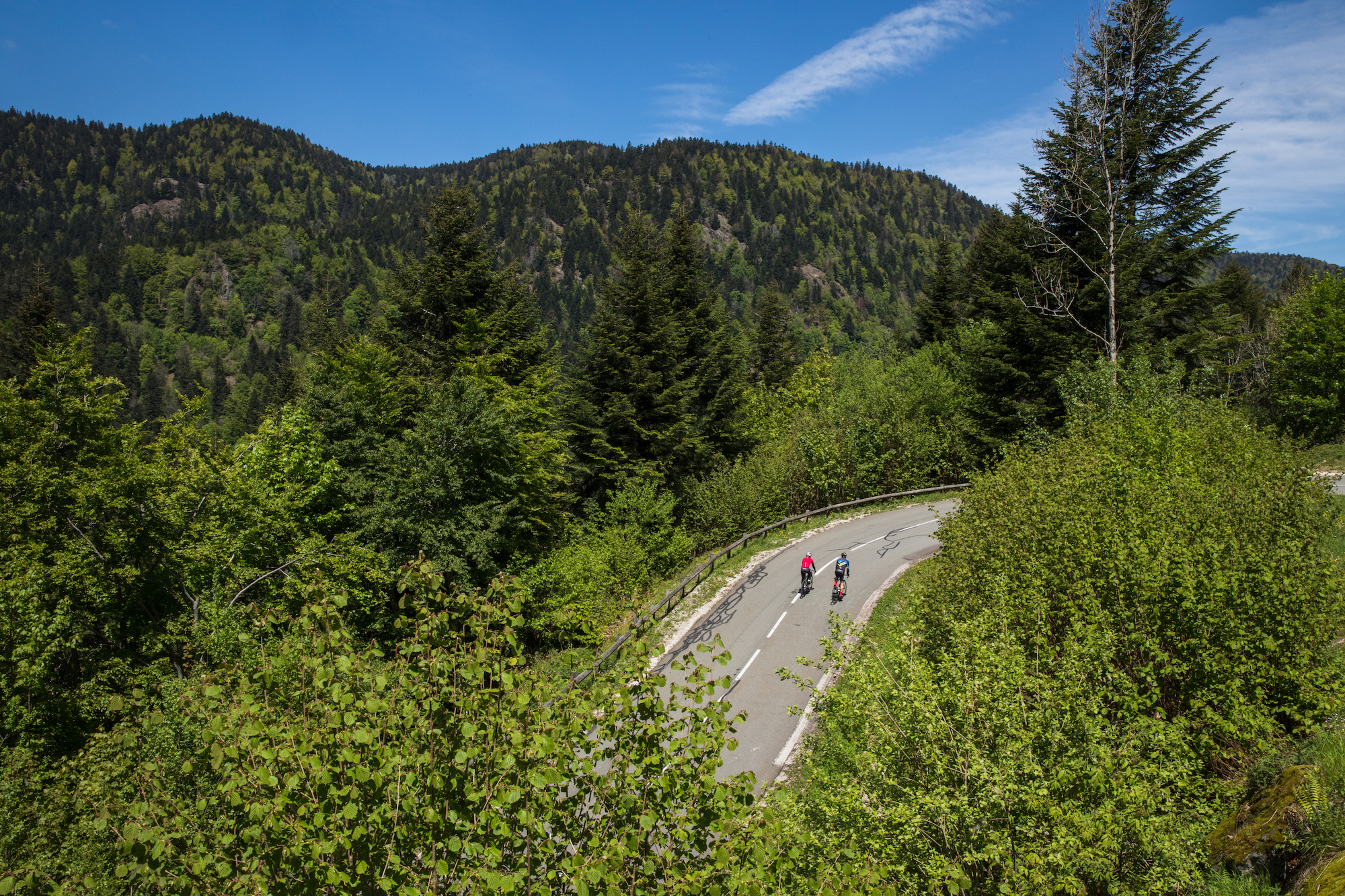
Every rider — from when Wiggins pulled on the maillot jaune at the top of the mountain in 2012 — who has been in yellow after summiting La Planche, has gone on to win the Tour. Take a look at the subsequent stages held here: in 2014 Vincenzo Nibali appeared to be in his pomp, asserting his authority as early as stage two on Jenkin Road in Sheffield and consolidating this performance with an aggressive ride over stage five’s Roubaix cobbles.
He perhaps dealt the decisive blow, though, on the slopes of La Planche on stage 10, when he began pushing the pace with 2.5km and dispatching the likes of local man Thibaut Pinot, who grew up in Mélisey, less than 10 miles from the climb — and whose name today can be found splashed across the road surface at regular intervals — and Joaquim Rodriguez (who La Planche, on paper, looked custom-designed for) in the process.
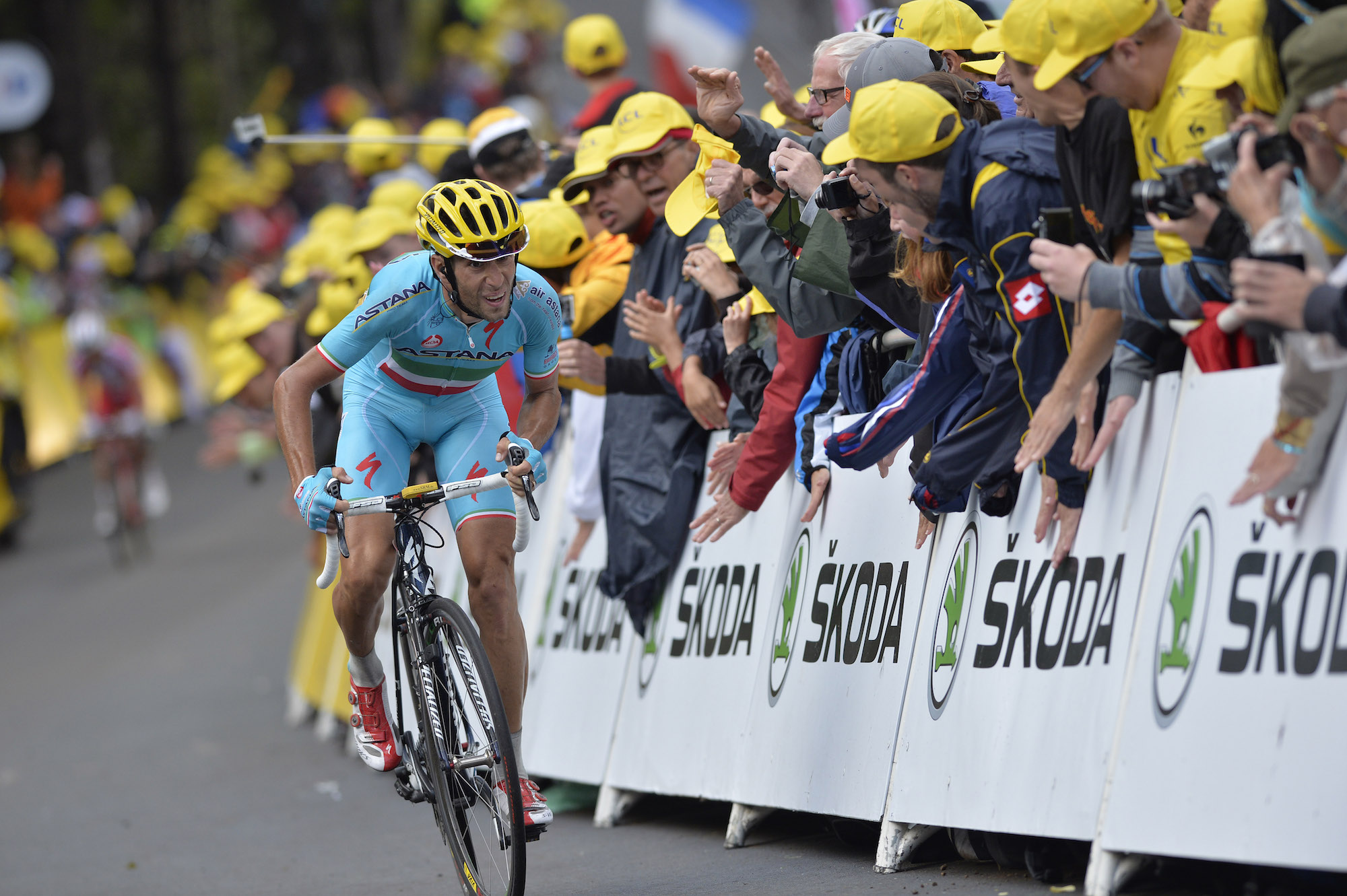
Nibali rode into yellow that day, and like Wiggins in 2012, proudly took the top step in Paris to celebrate his first Tour win. Ditto 2017 when on stage five Sky let stage winner Fabio Aru wrestle his bike to the finish line, while setting the stage for Froome to squeeze a strong final 1.5km and finish the day in yellow. He would hold it almost all the way to Paris — he loaned it to Aru for two days. A fourth win of La Grande Boucle had been secured for Froome and La Planche’s crystal ball remained gin clear.
Early doors
OK, so you may think we’re clutching at straws somewhat here. It isn’t unusual for those strongest in the mountains to be sipping from a champagne flute rather than a bidon during the final procession to Paris, in fact it’s pretty much par for the course.
>>> Six key climbs of the 2019 Tour de France
The fact, however, is that La Planche des Belles Filles has always appeared in the first half, if not the first week, of the Tour. And being the first mountain stage in each edition of the race it has served, it is the ultimate indicator of who among the heads of state has brought their climbing legs with them; who is best prepared for a three-week dogfight?
A middle distance mountain with a punchy gradient, La Planche has reliably helped us answer those questions.
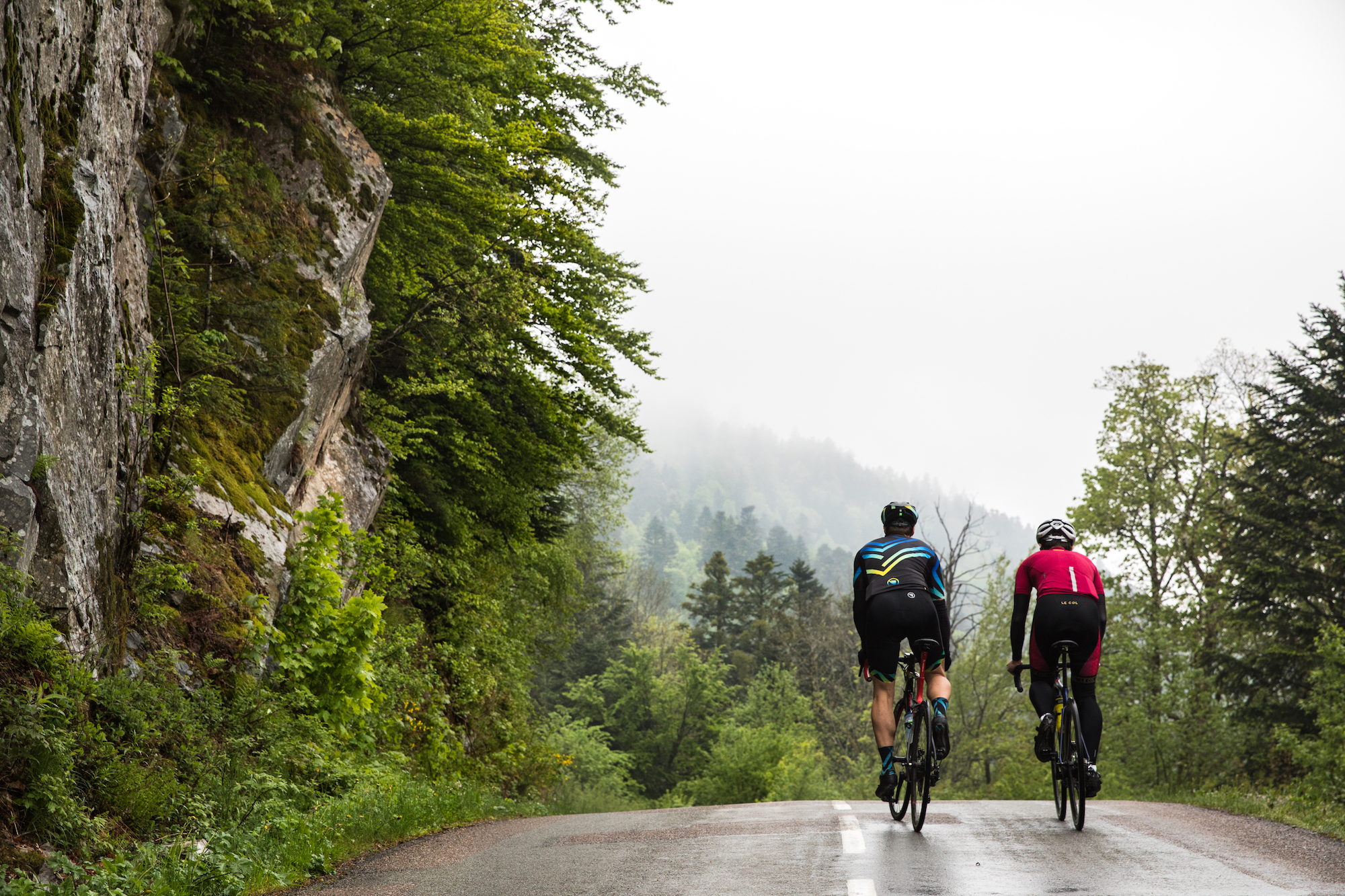
So this year, on stage six — which starts in Mulhouse — fans will watch with heightened interest as the peloton weaves its way to the top of the climb, domestiques rinsing every last drop of energy from their quadriceps while team leaders lurk, biding their time, summoning the courage to lay six months of training on the line. This July, though, the race will go an extra kilometre into hitherto unexplored territory.
Not content with the levels of hurt inflicted by La Planche’s final 20 per cent gradient, the Tour organisers have seen fit to add a further kilometre of gravel track to the ascent, which will take the Tour to the summit proper.
Indeed, after exchanging blows up the climb’s initial 5.9km, the riders will now face a new and improved conclusion to La Planche, replete with craggy ruts and loose gravel. After the road levels out at the top of the initial peak, those gunning for GC placings or a stage win will have several hundred metres worth of respite to regroup before the suffering starts again and a left turn takes them onto the unsurfaced track to the top.
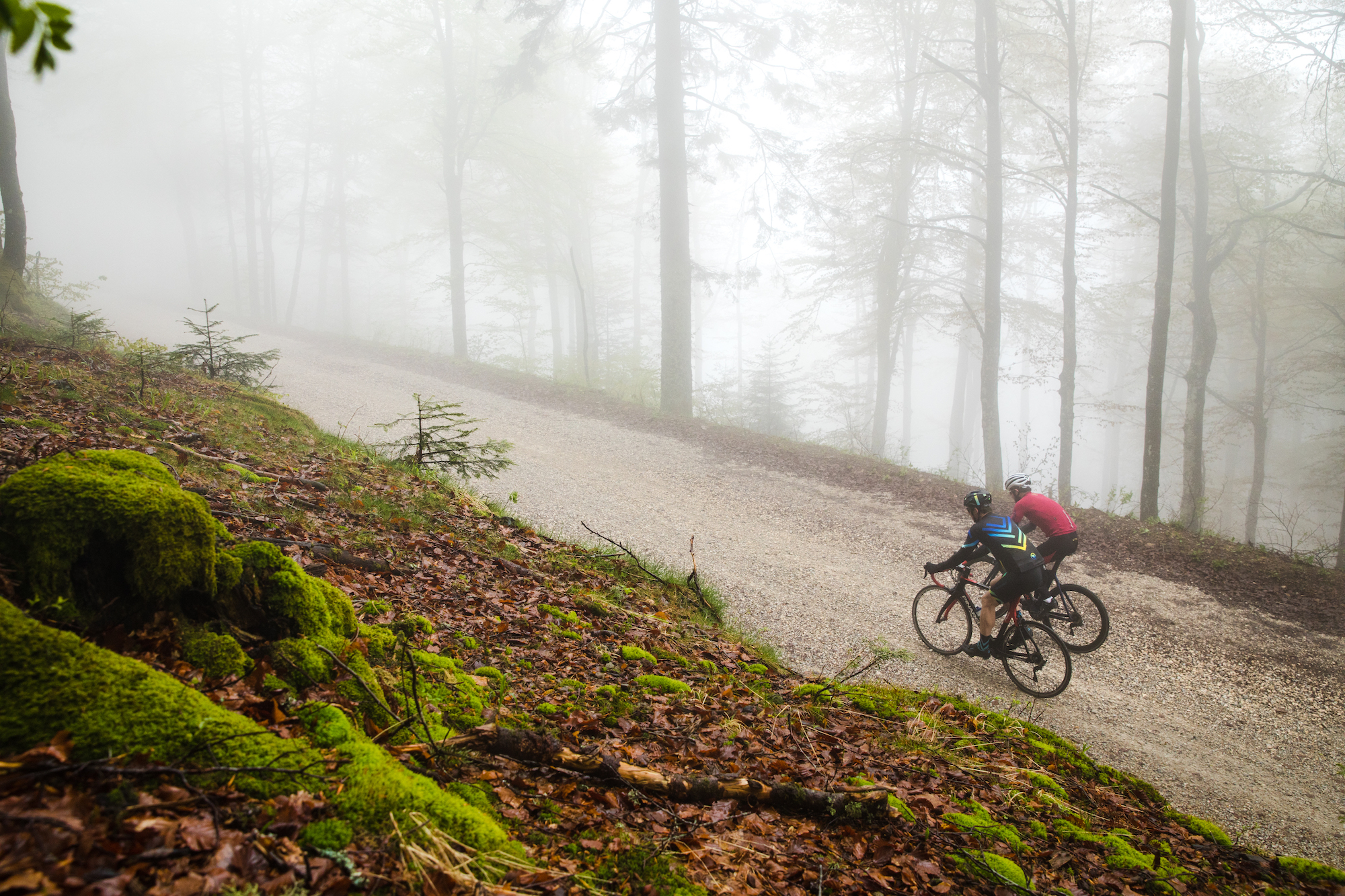
Here we will see who is holstering what. After bisecting a clump of woodland the gradient ramps up to sections of 25 per cent, and DEFCON levels of the red will be entered as those who’ve made the cut battle for the line.
Anyone on a bad day will go rapidly backwards on this brutal addition to the Tour parcours. And anyone on a good day — well, the top step of the podium in Paris may very well beckon.
What’s it like to ride?
After leaving a trail of destruction behind us at the local boulangerie in Plancher-les-Mines, we — myself and Cycling Weekly Lead Out presenter Paul Knott — clipped in at the base of the ascent amid swirling mists and a gentle but stubborn drizzle. A contrast to a climb usually bathed in warm sunshine when the Tour climbs it in early July, we straightened our arm-warmers, engaged the small chainring and rode forth into the breach. Even with its relatively short history at the Tour, these slopes have witnessed some serious scraps and we were keen to find out what the fuss was about.
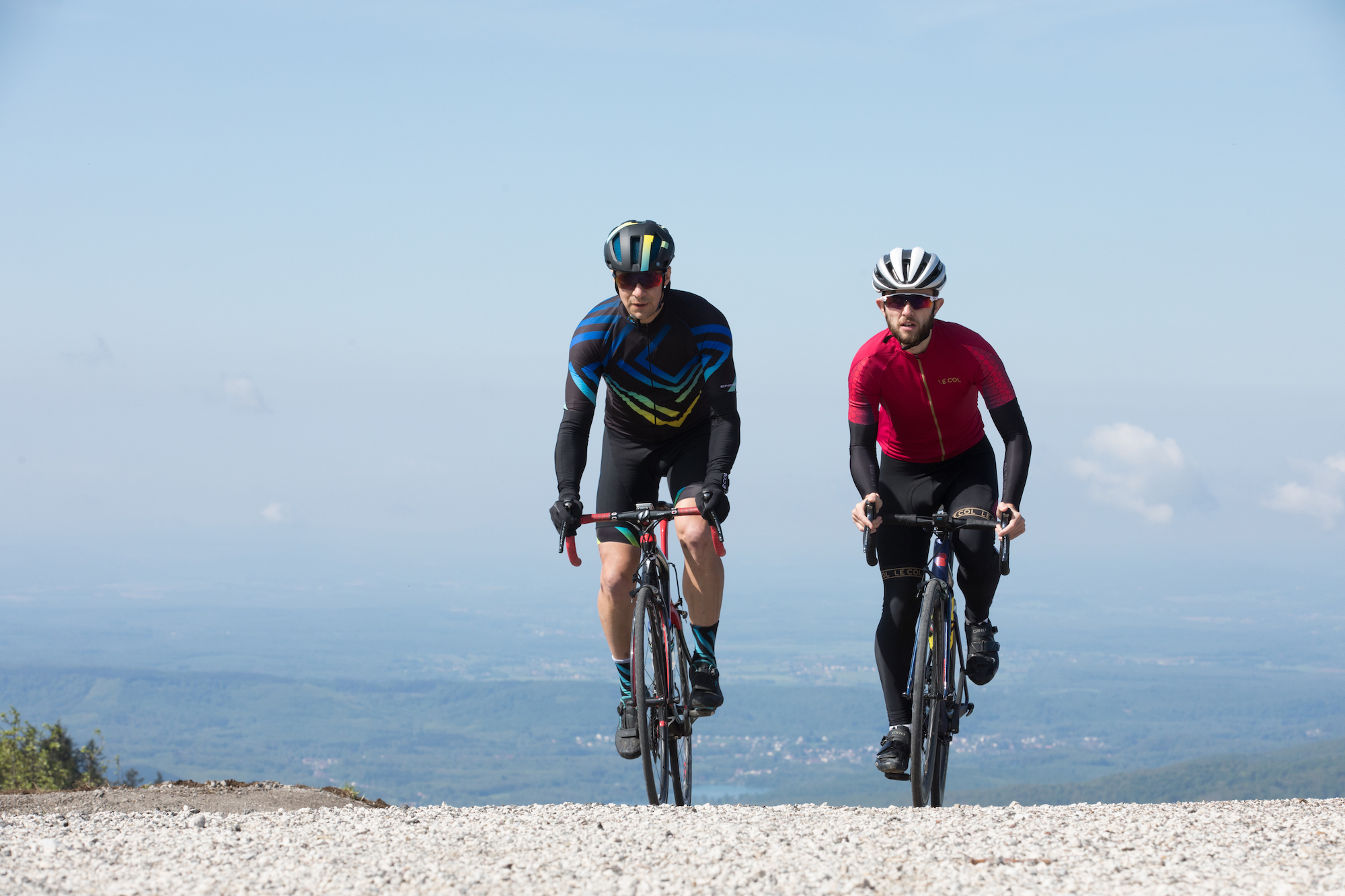
From the outset there’s no false flat, no gentle trajectory to ease you in — just a long serpentine length of silky smooth tarmac slithering into the distance as far as the eye can see. Bordered by dense vegetation, predominantly pine trees with a low murky grey ceiling on this rainy day in late May, the opening kilometre was a corridor that ramped up to a 10 per cent gradient and stayed there for the duration.
Coming from England’s civilised humps, it takes a moment for the brain to accept what you’re putting the body through
in the French mountains, but we engaged shut-up-and-suffer mode and found a rhythm to bag the summit in reasonable condition.
Reality check
With the gradient dropping down to a more manageable average of 6.7 per cent throughout the second kilometre, allowing us to spin our 28t cogs at a slightly less embarrassing cadence, we were soon brought back to reality after rounding the third hairpin. Not only did the gradient rocket back up to double figures but we were also submerged in thick cloud.
Ahead of me, Dan, our photographer, had disappeared, hidden behind a thick veil of mist. Behind me Paul was nowhere to be seen, but I could barely see my back wheel so he was probably close by, toiling in the gloom. Alone now with the drizzle tapping out a delicate crackle on my helmet, the road forever rising, the hurt levels always high, kilometres four and five (9.5 and 8.3 per cent) were silently ticked off.
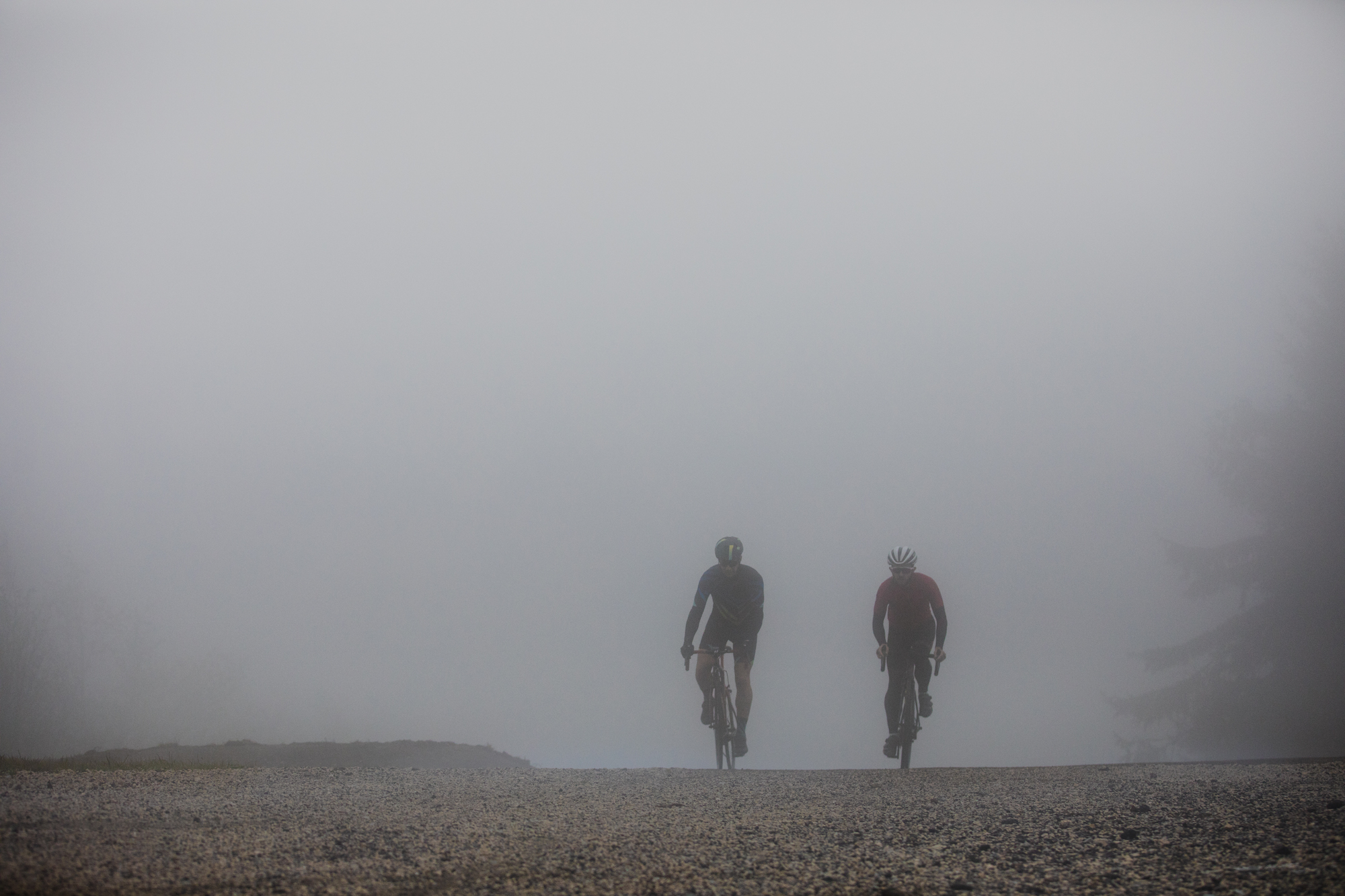
Then, in an unprecedented turn of events, the road ahead dropped away. I couldn’t really see the ground so it was a physical rather than visual stimulus, but yes, I was definitely going downhill. Was that it?
But this transpired to be the calm before the storm. Rounding the final tarmacked hairpin, I was met with a towering
chunk of concrete which required a gargantuan push and not a little zig-zagging to negotiate.
This ramp signalled the original summit finish, and regrouping now, we located the newly added track through ever-thickening cloud, plunging our front wheels into the gravel. I was first to fall off, then down went Paul. I’m sure Dan toppled backwards into a drainage gully at some stage. All the time the gradient remained unrelenting and it took all the concentration and focus we could muster to keep the bikes upright.

A heavily wooded section offered some respite, with gradients dipping as low as seven per cent, and this served to clear some lactate for the climb’s utterly brutal conclusion. A hairpin bend touches on a blood curdling 25 per cent, a trajectory that remains consistent until the top of La Planche des Belles Filles some 50 metres later.
It’s barbaric. Totally barbaric. The Tour has taken a beast and turned it into a giant-killing monster.
Dark secret
Although Belles Filles literally translates as ‘Beautiful Girls’, the name actually derives from the local plant life, with Belles Fahys in the regional dialect meaning beautiful beech trees. A Chinese-whisper effect later saw this become Belles Filles. Meanwhile, Planche, ‘board’, comes from the nearby small town of Plancher-les-Mines.
A slightly more involved explanation of the name suggests that during the Thirty Years’ War (1618-1648), young women from Plancher-les-Mines fled up the mountain in a bid to escape Swedish mercenaries, and when this failed, so scared were they of being assaulted, that they took their own lives. An epitaph for the ‘beautiful girls’ was said to be engraved by one of the soldiers.
The stats
Maximum altitude: 1,140m
Length: 6.9km
Average gradient: 8.9 per cent
Hairpins: Six
Difficulty rating: 7/10
Tour de France appearances: Three (four after this edition)
The pros say: “In the final it slipped away” (Richie Porte on suffering on La Planche in 2017)

Thank you for reading 20 articles this month* Join now for unlimited access
Enjoy your first month for just £1 / $1 / €1
*Read 5 free articles per month without a subscription

Join now for unlimited access
Try first month for just £1 / $1 / €1
Steve has been writing (mainly fitness features) for Cycling Weekly for 11 years. His current riding inclination is to go long on gravel bikes... which melds nicely with a love of carbs